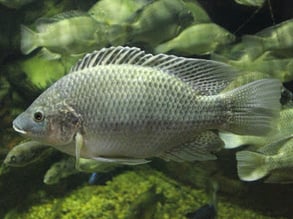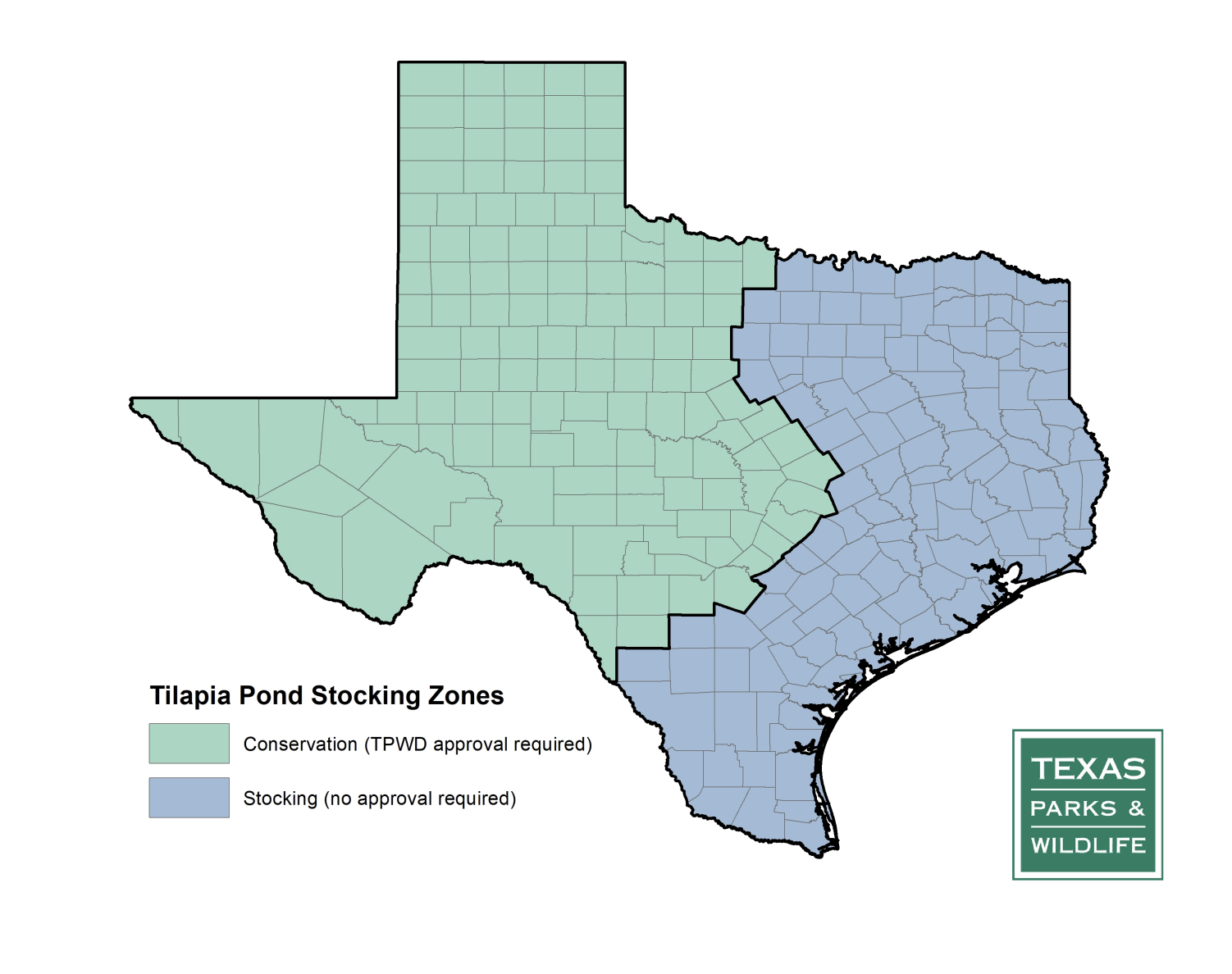The fisheries biologists at Pond King frequently recommend stocking Grass Carp and Tilapia to help control aquatic vegetation. Because these are both viable methods of biological control for aquatic vegetation, they are often the best recommendation.
But there have been some changes at the Texas Parks and Wildlife Department that may change how private pond and lake owners can acquire them.
Stocking "Exotic Species" in Texas Ponds and Lakes
Grass Carp and Mozambique Tilapia are both viable methods of biological control for aquatic vegetation, but they are considered exotic species. Recently, the Texas Parks and Wildlife Department changed some of the regulations surrounding these "exotics" in a way that may impact your pond management plans for 2021.
About Grass Carp
The largest of the minnow family and 1 of 4 Asian Carp species in the U.S., the Grass Carp is not indigenous.
But because Grass Carp are notorious feeders, capable of consuming 40% to 300% of their body weight per day in plant material, they were brought to the U.S. in 1963 to aquaculture facilities in Auburn, Alabama, and Arkansas, specifically for the purpose of controlling aquatic vegetation.
When Were Grass Carp Introduced to the United States?
The first release of Grass Carp into open waters took place in Arkansas when some fish escaped an experimental fish farming station. Since then, this prolific species has spread rapidly due to stockings by federal, state, and local government agencies, and release by individuals and private groups, escapes from farm ponds and aquaculture facilities.
Why are Grass Carp an Issue for Native Waters?
Grass Carp's breeding and feeding habits pose a threat to their non-native habitats in several ways. Grass Carp can disrupt ecosystems in that they only digest about half of the plant material consumed each day. The fish expels the rest into the water as waste, leading to an increase in nutrients with subsequent algal blooms. Algal blooms lower the water clarity and dissolved oxygen content.
Additionally, Grass Carp also harbor parasites that local species may not have a resistance to, leading to local extinction events and lasting changes in ecosystem dynamics.
Why Would Anyone Want to Stock Grass Carp?
So, you might be asking yourself, if Grass Carp are capable of overrunning my pond and competing with my other fish for resources, why do I want them?
The answer is simple: they effectively manage several types of aquatic vegetation, and the only Grass Carp that are legal to stock in the state of Texas are triploid.
What is a Triploid Grass Carp?
Triploid Grass Carp, which have three sets of chromosomes, are sterile. Since you're stocking infertile fish, you'll get all the vegetation control benefits with minimal population-related issues. Just remember, Grass Carp live a relatively long life, on average up to 8-10 years with some reaching 12 years of age or even more.
Grass Carp can reach weights of 60 pounds or more, but their efficacy for weed control starts to diminish at age 7, so you'll need to restock at some point.
How to Get a Permit for Grass Carp in Texas
In an attempt to stave off the invasion of Grass Carp, Texas has required its residents to obtain a permit to stock triploid Grass Carp.
To apply for a permit, you first have to have a permit account with the Texas Parks and Wildlife Department (TPWD). You can create that account here.
The fee the TPWD charges for a private application is comprised of two parts:
- A non-refundable processing fee, used to fund administrative costs of the triploid Grass Carp permitting process
- A flat fee per carp; this fee is refundable if the quantity of carp requested is partially or wholly denied.
The permitting process can take up to 4 weeks. To get your Grass Carp permit, visit tpwd.texas.gov.
About Mozambique Tilapia

Mozambique Tilapia is a member of a group of cichlids endemic to Africa.
These fish have the ability to adapt to a wide variety of conditions, are incredibly fecund, and, while they are well known as a method of biological control for certain types of aquatic vegetation, they are omnivores and very opportunistic feeders.
While they are capable of breeding under suboptimal conditions and tolerating brackish water, they cannot survive in waters with sustained temperatures below 55 degrees.
Stocking Tilapia in North Central Texas
Pond King biologists recommend stocking Mozambique Tilapia in our region for three primary reasons:
- Since Tilapia cannot survive in water with sustained temperatures below 55 degrees, in our region of Texas, they die off each season in late fall, negating any potential issues.
- While Tilapia are omnivores, they consume large quantities of algae, contributing to the biological control of aquatic vegetation.
- Tilapia are prolific breeders making them an excellent forage species for bass fisheries.
Do I Need a Permit to Stock Tilapia in Texas
According to the TPWD, it is unlawful to possess or transport any organisms the state has legally classified as exotic, harmful, or potentially harmful - except as authorized by the TPWD.
Effective as of January 27, 2021, the TPWD announced that anyone living in the "conservation zone" will be required to receive approval from the department before stocking Tilapia.
The map below shows the conservation and stocking zones as determined by the TPWD. If your pond or lake is in the blue counties, no permit is required. But, if your property is in the green zone, you will need approval to stock Mozambique Tilapia.
Click here to view the list by county. NOTE: TPWD will only consider fully completed applications received by the Department at least 30 days prior to any intended stocking.

Pond King is the Texas Choice for Pond Management
The fisheries biologists of Pond King are always ready to provide you more information about pond stocking and exotic fish management. Feel free to call or contact a member of our team to begin your pond or lake management plan!
Happy stocking!



